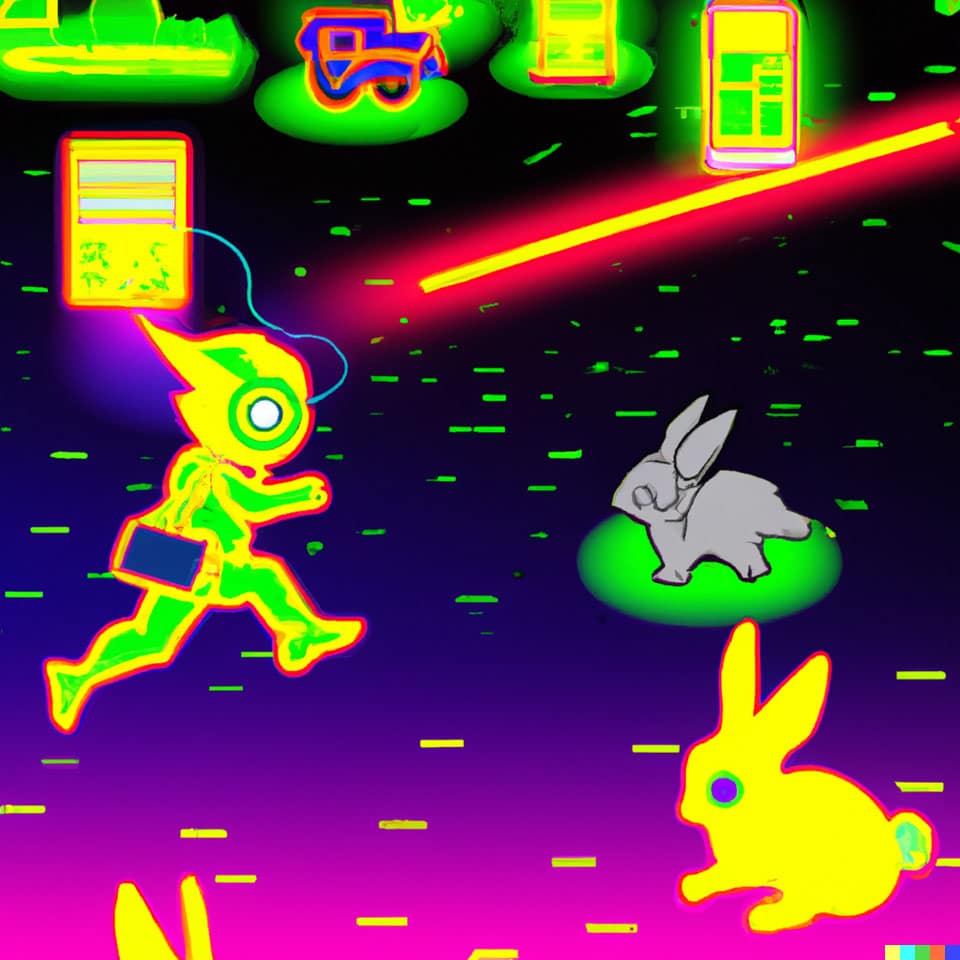The future of gaming: An interview with Yat Siu, Co-Founder and Executive Chairman, Animoca Brands

I recently attended Roblox’s Q4/FY 2023 earnings’ videoconference. While the numbers are all growing and, undoubtedly, massive, I still struggle with the huge bottom-line losses reported by Roblox year after year. I can’t stop to think this in my head: there is something wrong here. It made me think of Matthew Ball’s recent essay, “The Tremendous Yet Troubled State of Gaming in 2024,” which highlights the key issues of the entire gaming industry: extremely high capital intensity for games’ production, underdevelopment of monetization through advertising, lackluster ‘real’ growth, no space for indies to break through, lack of true diversity of content.
Who else is seeing this? Is there a different future for gaming? I sat down with Yat Siu, Chairman of the Board at Animoca Brands, which is behind The Sandbox, for example, and the most popular blockchain-powered games on the planet, to discuss about traditional vs. non-traditional gaming.
Here is the summary of our exchange.
What are the main differences between traditional gaming (like Roblox or Fortnite) and blockchain-based gaming?
There is one big difference. Blockchain-based gaming has digital property rights, while traditional gaming doesn’t. Our vision is centered on sovereign rights for gamers. In traditional gaming, all of a game’s assets benefit only the game, and engagement benefits only the ecosystem. Our view is exactly the opposite: we think that it’s all about the assets, and that the ecosystem is at the service of the assets and their owners. In the physical world we already behave exactly like that.
I do whatever I want with my physical properties and I drive my physical car wherever I feel like.In the real world the broader ecosystem is at the service of our individual freedom. In the traditional digital world, we are much more limited. You don’t own your virtual property or virtual car in a traditional game – the game itself owns all assets and simply lets you use them. Traditional gaming demands that you stay within the game to unlock any positive network effects. In blockchain-based gaming, the assets are owned by the gamers, conferring to them some of the same freedoms that we get from owning assets in the real world.
What are the main technological obstacles for blockchain-based gaming to become as popular and penetrated as Roblox or Fortnite?
I don’t think the obstacles to creating a great game are technological. We have already built great games that behave like traditional ones while offering users the benefits of true digital ownership. For example, Phantom Galaxies (developed by Animoca Brands’ subsidiary Blowfish Studios) is a sophisticated and great-looking product. Most gamers engage with games for social reasons, because their friends are there. This is the key driver for the success of any game.
Web3 games have not yet reached their apex, in terms of massive following. The number one challenge for adoption is mindset. Buying a phone or opening a bank account is difficult from a procedural point of view, but we still go through it because we understand the important benefits of communicating and banking, and we accept these activities as part of the social norm. Web3 is like the Web in its early days, around 1996: it exists and offers amazing benefits, but it’s mainly used by early adopters who understand those benefits. For example, Web3 gamers tend to be more financially literate than Web2 gamers. Web3 gaming is growing fast in Asia, which tends to be very capitalistic and where financial interests are part of everyone’s culture. Blockchain-based games are more popular in Asia because gamers there want to play-and-earn and play-and-own on the basis of their skills, engagement, and ‘work’ done for the ecosystem.
The recent SEC approval of ETF Bitcoin in the US could be a way to open the door to in-game rewards such as tokenized assets, securities, or crypto, especially for an adult audience, or for branded programs?
It’s a good first step. We learn through play. Today, most of our interactions are digital. We can scale anything digitally. Thanks to the digital world, we have more connections, globally and locally, than we could ever have had in the past. In modern times, media such as books are the main platform for telling stories. Games are a newer medium that has become dominant in today’s entertainment platforms, where users share, have fun, and learn.
Games could be a great way to teach a massive audience about finance. The SEC approval opens new possibilities for fractional ownership of digital assets, and especially reinforces the idea that we can own stuff digitally. The Web2 world is based exclusively on rent and on the concentration of gains in the hands of a few big actors, but once you improve users’ financial literacy that approach starts to look much less appealing.
What’s the best blockchain game that Animoca Brands has invested in? What KPIs do you look at?
Axie Infinity was a tremendous success, and it is still growing. Pixels is one of the biggest Web3 games in the world. The main KPI we look for when deciding to invest is a project’s current and potential network effect.
Web3 games do not yet have hundreds of million users like some traditional games. It’s a bit like restaurants: MacDonald’s is incredibly popular, but it isn’t the only option if you want to go out with family or friends. There is a lot more out there to choose from. In the Web2 arena, where free-to-play games dominate, people give away their data and info for games and platforms to monetize. Gaming is in trouble because users who pay are now a small minority. This is why the P&L in traditional gaming doesn’t hold well. Web3 gaming on the other hand offers better chances to secure paying users, to have a healthier and faster path to financial sustainability, and to protect IP.
Unlike traditional games, blockchain-based games can be profitable with just a few thousand users, while having richer content and diversity and higher engagement, thanks to a fairer distribution of resources across the ecosystem (participants receive rewards and benefits commensurate with their efforts).
Capitalism is an economic system that promotes change and is disruptive by nature because it is based on market competition, favoring entities that are better able to compete. Innovation means change. Stability is a feature of closed oligopolistic markets. In such markets, including most of the gaming industry, we have deprioritized innovation in the name of stability and of the concentration of power in the hands of a few actors who don’t take risks to innovate because they don’t have to. This is why we have, for example, so many shooter games or professional sports games that all look and feel so like each other. When developers enter Web3 gaming, they jump in an open market and can make money faster – note that volatility is also part of the equation. This is why we need to raise awareness about financial literacy and our digital worth, because this will encourage the gaming industry to enter the disruptive world of blockchain and flourish.
Written by Francesco Pagano.
Have you read?
Ranked: Countries with Highest (and Lowest) Rates of Infant Mortality, 2024.
Ranked: Countries That Waste the Most Food In The World, 2024.
Ranked: Countries with highest malaria death rates in the world, 2024.
Ranked: These are the countries with the highest (and lowest) death rate from malnutrition, 2024.
Revealed: 100 Best-Selling Mobile Phones of All Time.
Bring the best of the CEOWORLD magazine's global journalism to audiences in the United States and around the world. - Add CEOWORLD magazine to your Google News feed.
Follow CEOWORLD magazine headlines on: Google News, LinkedIn, Twitter, and Facebook.
Copyright 2025 The CEOWORLD magazine. All rights reserved. This material (and any extract from it) must not be copied, redistributed or placed on any website, without CEOWORLD magazine' prior written consent. For media queries, please contact: info@ceoworld.biz








